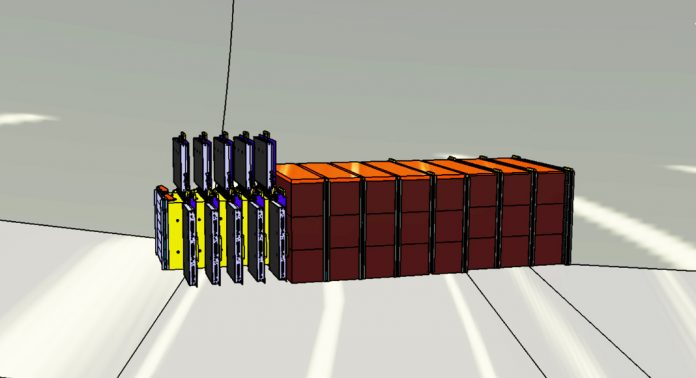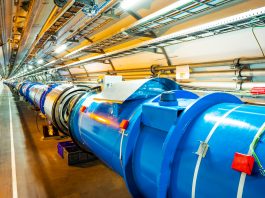CERN’s newly approved project, Scattering and Neutrino Detector at the Large Hadron Collider, will be the facility’s ninth experiment.
The world’s biggest and most powerful particle accelerator has been approved for a new experiment. In March 2021, the CERN Research Board gave their approval for the project: Scattering and Neutrino Detector at the Large Hadron Collider (SND@LHC)..
This experiment has been developed to detect and study neutrinos – which are particles much like electrons but have no electric charge and very little mass – and will complement and add to the physics reach of previous and on-going LHC experiments.
The new neutrino detector experiment is complementary to FASERν, a neutrino subdetector of the FASER experiment, which has recently been installed in the LHC tunnel.
Neutrinos have been detected from various sources, but they are still the most perplexing fundamental particles in the Universe.
FASERν and SND@LHC will produce measurements of neutrinos generated at a particle collider for the first time, which could therefore open a new frontier in neutrino physics.
SND@LHC is made up of a neutrino target followed downstream by a device to detect muons, the heavier cousins of electrons, produced when the neutrinos interact with the target. The target is composed of tungsten plates with emulsion films and electronic tracking devices. The emulsion films disclose the tracks of the particles generated in the neutrino interactions, while the electronic tracking devices offer time stamps for these tracks. Along with the muon detector, the tracking devices also calculate the energy of the neutrinos.
Much like its counterpart FASERν, the SND@LHC will be capable of detecting different types of neutrinos – electron neutrinos, muon neutrinos, and tau neutrinos. However, contrasting FASERν, which is based on one side of the ATLAS detector and along the LHC’s beamline, the new neutrino detector will be located slightly off the beamline, on the opposite side of ATLAS.
The positioning of this apparatus will enable SND@LHC to detect neutrinos generated at small angles with respect to the beamline, but bigger than those covered by FASERν.
“The angular range that SND@LHC will cover is currently unexplored,” commented SND@LHC spokesperson Giovanni De Lellis. “And because a large fraction of the neutrinos produced in this range come from the decays of particles made of heavy quarks, these neutrinos can be used to study heavy-quark particle production in an angular range that the other LHC experiments can’t access.”
As well as this, CERN’s latest neutrino detector will have the ability to search for new particles, specifically weakly interacting particles that are not predicted by SM model of particle physics that could make up dark matter.
The SND@LHC will be implemented over the course of 2021 and will hopeful begin to collect data when the LHC begins operating again in 2022.









